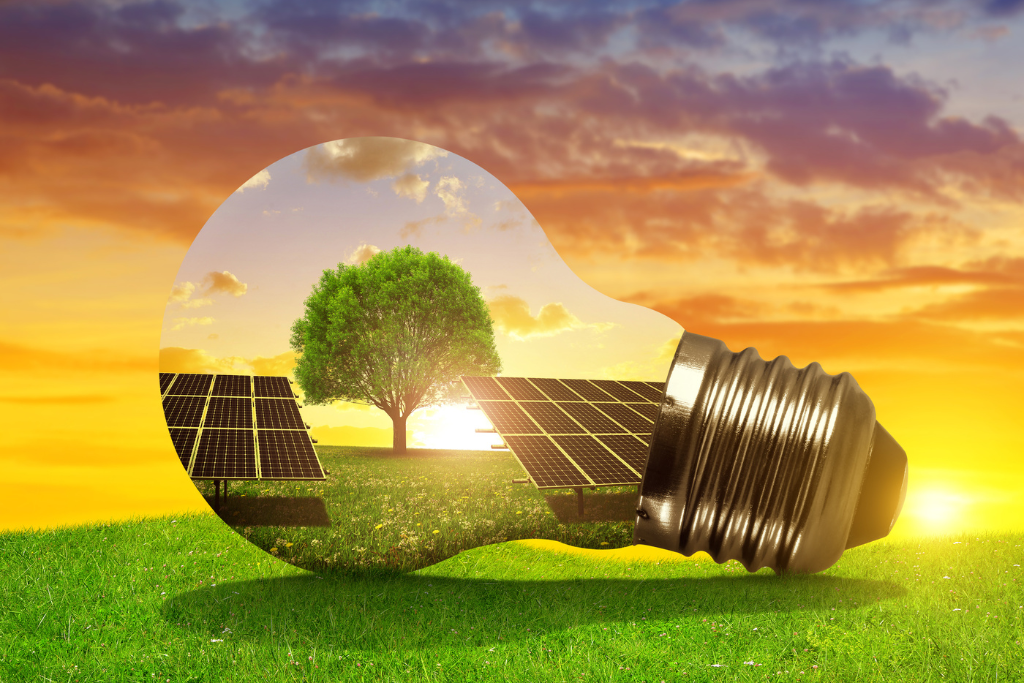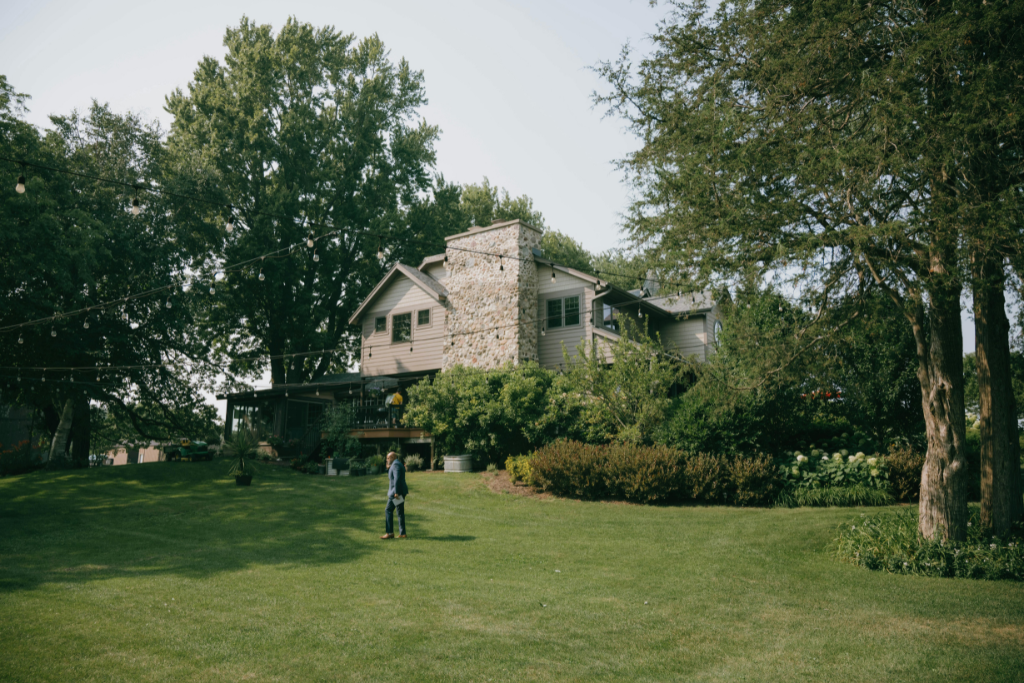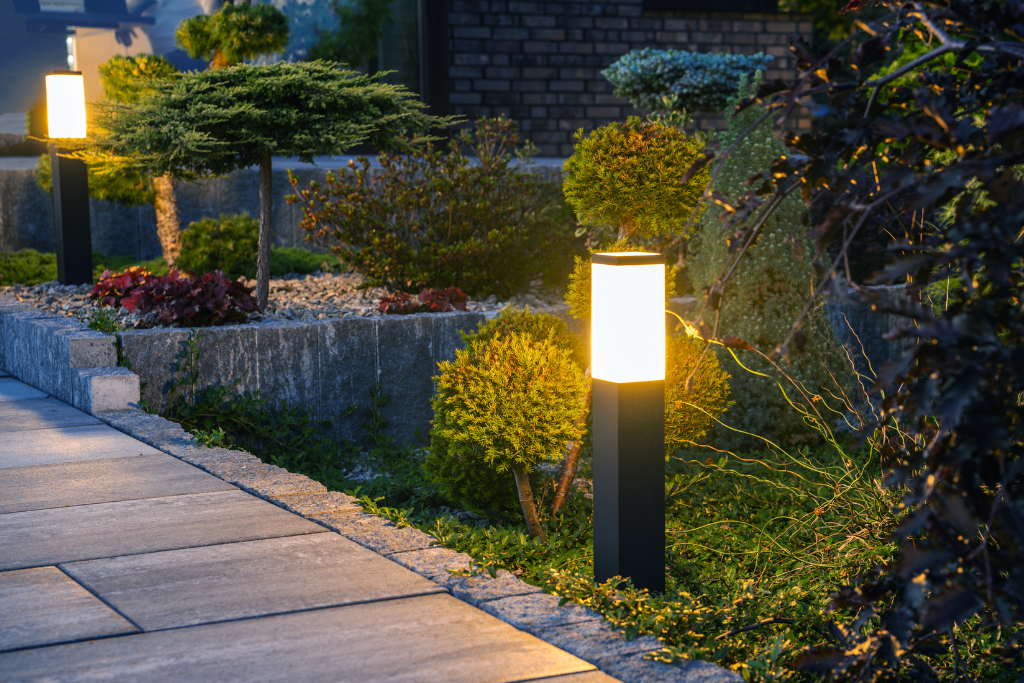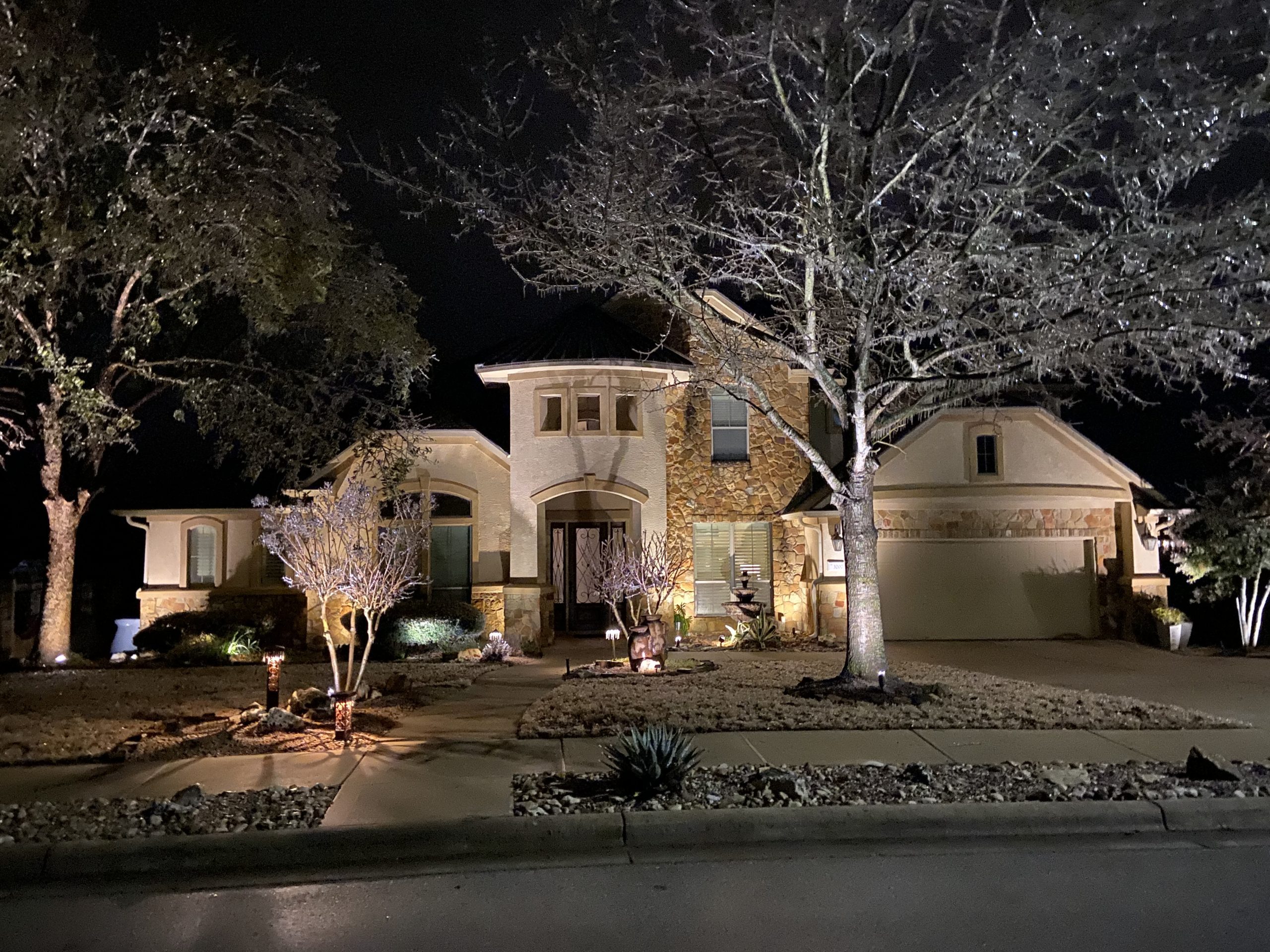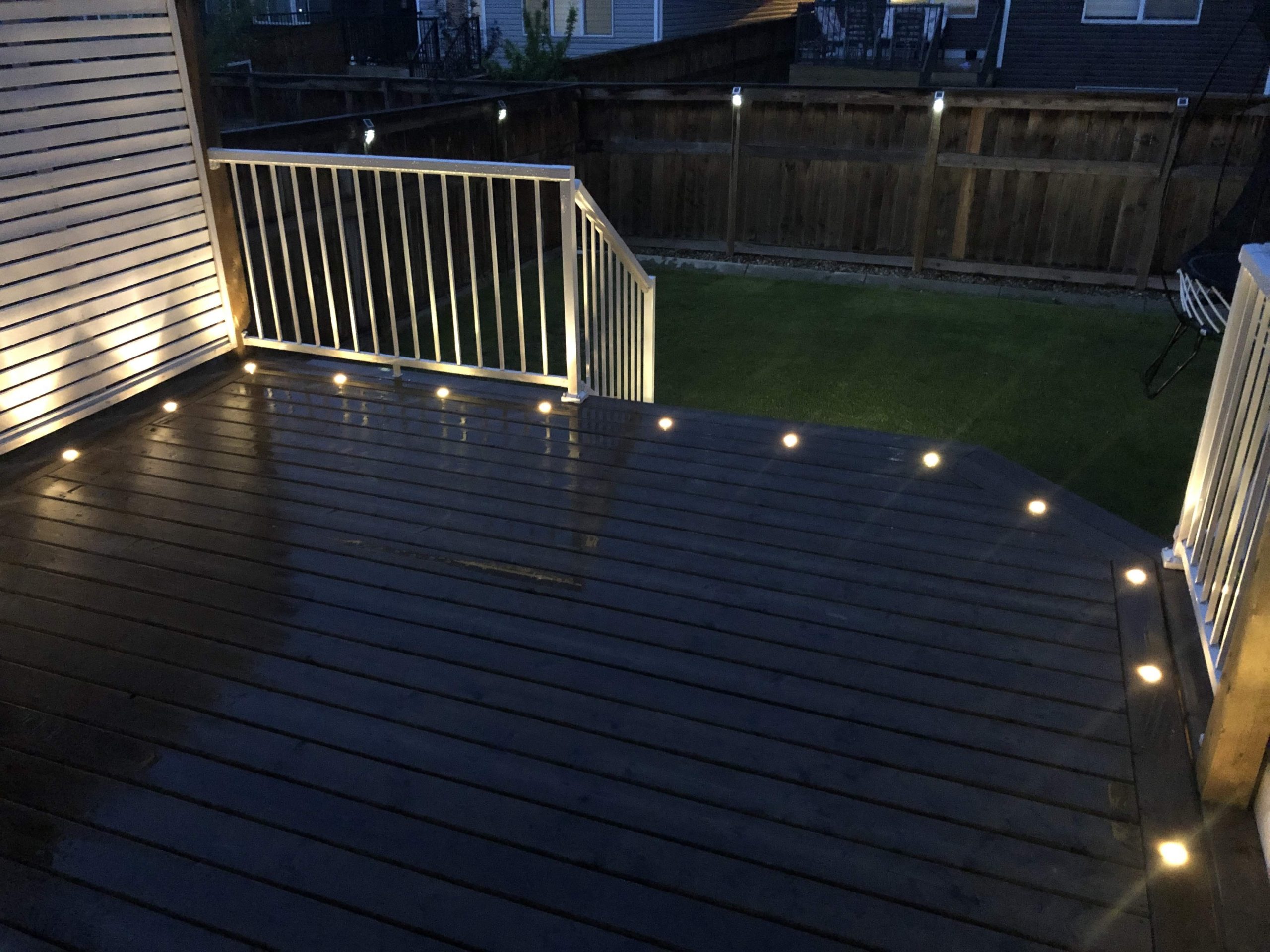Every homeowner dreams of a well-lit home exterior that feels inviting, safe, and festive all year long. Whether it’s for the holidays, a family gathering, or a relaxing evening outside, outdoor lighting can completely transform the way your home looks and feels.
Today, two options dominate the conversation: permanent Christmas lights and solar lighting systems. Both promise convenience and energy savings, but they serve very different purposes. One – built for powerful, lasting elegance, and the other for simple, short-term illumination.
This guide breaks down the key differences between the two, so you can make the best choice for your home’s appearance, safety, and long-term value.
Understanding the Core Difference
The biggest distinction between permanent outdoor Christmas lights and solar lighting is power and performance.
- Permanent lights connect to a low-voltage power supply, offering continuous brightness and advanced control.
- Solar lights depend on sunlight and internal batteries, meaning their performance varies based on daily weather and seasonal changes.
One offers consistent, customizable lighting; the other offers convenience with limited capability.
The Design Advantage: Lighting as Smart Architecture
Modern permanent Christmas lights are more than decorations. They’re integrated into your home’s architecture.
- Hidden installation: The lights are tucked under your soffit or roofline, with channels that match your home’s trim color.
- Smart home integration: Many systems can pair with Alexa, Google Home, or app-based controls, letting you change colors, dim, or schedule lighting scenes.
- Aesthetic flexibility: Switch instantly from soft white architectural lighting to vibrant holiday displays or sports team colors.
In contrast, solar lights are mostly surface-mounted or ground-staked, offering limited design appeal beyond simple pathway illumination.
How Solar Lighting Falls Short in Real-World Use
Solar lighting sounds appealing because it’s renewable and wire-free. But homeowners often notice performance limitations within the first year:
- Dim output: A single solar bulb produces only a fraction of the brightness of low-voltage LEDs.
- Battery degradation: Rechargeable batteries lose capacity over time, reducing nightly runtime.
- Placement limits: Trees, fences, or cloudy weather can prevent panels from fully charging.
- Uneven lighting: As some panels get more sun than others, brightness varies across fixtures.
While solar is perfect for accenting gardens or pathways, it’s not designed to illuminate a full home or architectural features like rooflines, patios, or decks.
Energy Efficiency: Permanent LEDs vs. Solar Panels
When it comes to efficiency, both options aim to reduce environmental impact – but they achieve it differently.
- Permanent Christmas lights:
- Use energy-efficient LEDs that consume very little electricity (about 1-2 watts per bulb). Their low-voltage setup minimizes waste and ensures steady performance, regardless of sunlight conditions.
- Solar lights:
- Run on renewable energy from the sun but depend on battery storage and weather. Cloudy days reduce charge, and colder temperatures shorten battery life.
In short: permanent outdoor Christmas lights are more reliable for consistent, efficient use, while solar lights rely on environmental factors you can’t control.
The Real Cost of Ownership
Initial price tags can be misleading. Solar lighting looks cheaper upfront, but most homeowners find that replacing panels, batteries, or full fixtures every couple of years adds up.
Permanent lights, though professionally installed and higher in initial cost, last much longer. Over 10–15 years, the total cost of ownership often ends up lower than seasonal or solar alternatives.
Example Comparison Over 10 Years
| Category | Permanent Christmas Lights | Solar Lighting |
|---|---|---|
| Initial Cost | $3,500 (average for mid-sized home) | $400 (basic pathway & accent setup) |
| Average Lifespan | 15-20 years | 2-5 years |
| Maintenance Cost (10 Years) | Minimal – occasional app updates or bulb check | $800-$1,200 for battery & fixture replacements |
| Energy Cost (10 Years) | ~$50–$100 total (low-voltage LED system) | $0 (solar-powered) |
| Brightness & Performance | Consistent brightness and smart control in all weather | Inconsistent performance, reduced output in cloudy or shaded areas |
| Resale/Property Value Impact | Increases curb appeal and home value | Minimal impact |
| Warranty | 10-year manufacturer warranty with lifetime bulb coverage | 1-2 years on panels and batteries (varies by brand) |
| Total Estimated Cost (10 Years) | ≈ $3,600-$3,700 | ≈ $1,200-$1,600 |
| Overall Value | High – Smart home integration, customization, long lifespan | Moderate – Low-cost entry, but lower durability |
Key Takeaway:
Permanent lights cost more upfront but deliver continuous performance, smart customization, and property value gains that offset the investment within a few years. Solar lights may seem economical at first but require replacements and offer less consistent illumination — making them better suited for short-term or secondary lighting applications rather than full-home installations.
Everyday Use: Not Just for the Holidays
Many homeowners choose permanent Christmas lights not just for the holidays, but for how they enhance daily life.
Year-Round Applications
- Warm white architectural lighting for nightly curb appeal
- Increased home security with programmable dusk-to-dawn schedules
- Custom colors for events like birthdays, graduations, or neighborhood celebrations
- Sports spirit lighting for local teams (orange for Astros, blue for Cowboys, red for Texans fans)
By investing in one system, homeowners gain lighting that adapts to every season, occasion, and mood.
Safety and Maintenance: A Clear Winner
Permanent lighting systems are built with corrosion-resistant materials, sealed LED bulbs, and low-voltage wiring, which means:
- No risk of overheating
- No tripping breakers or blowing fuses
- No ladder climbing for re-installs
Solar fixtures, on the other hand, often need repositioning, cleaning, or replacement after storms. Batteries may corrode over time, leading to inconsistent performance or outright failure.
Safety takeaway: Permanent systems are installed to electrical code standards by certified technicians, ensuring long-term reliability and peace of mind.
Weather Performance: From Texas Heat to Northern Cold
One of the most overlooked differences between the two systems is weather durability.
Permanent lights are tested to handle extreme temperatures, high winds, and humidity. Their closed-track design prevents moisture buildup, and LEDs are rated for 50,000+ operating hours.
Solar lights, however, struggle under real-world conditions:
- Prolonged rain limits solar charging
- Cold climates shorten battery performance
- Dust or pollen buildup blocks panels from absorbing sunlight
If you live in a region with weather swings – whether it’s coastal humidity or mountain winters – permanent outdoor Christmas lights provide unmatched stability.
Environmental Responsibility: Looking Beyond the Bulb
While solar lights promote renewable energy use, their short life cycle often leads to more waste. Discarded batteries and plastic housings contribute to landfill accumulation.
By contrast, permanent lighting systems have aluminum housings, replaceable LEDs, and recyclable components. Their longevity (often 10+ years) means fewer replacements, less packaging, and a smaller carbon footprint over time.
Both are eco-friendly choices, but permanent LEDs win on sustainability through lifespan and reduced waste.
Technology and Smart Control Features
Permanent lighting systems are fully programmable, giving homeowners flexibility solar can’t match.
Smart lighting capabilities include:
- App or voice control through Alexa/Google
- Dimming options for “dark sky” compliance
- Color scenes for holidays and special occasions
- Scheduling automation for daily routines
- Music synchronization for parties and celebrations
Solar lights have a single dusk-to-dawn sensor. While convenient, they can’t be customized or adjusted remotely.
This difference matters most to homeowners who value design flexibility and convenience – transforming lighting from a passive feature to an active part of home living.
Curb Appeal and Property Value
Adding permanent Christmas lights to your home increases perceived property value. Potential buyers see them as a premium feature – similar to built-in landscaping or smart security systems.
Real estate professionals note that homes with integrated outdoor lighting:
- Appear more inviting during evening showings
- Photograph better for online listings
- Convey long-term maintenance and design investment
Solar lights, while visually appealing in small doses, don’t deliver the same architectural enhancement or impact on resale.
Ease of Operation
Once installed, permanent outdoor Christmas lights are practically effortless. Through the mobile app, you can:
- Turn lights on/off automatically
- Adjust brightness and color zones
- Change settings for different seasons or events
- Schedule energy-saving timers
Solar lights turn on and off automatically at dusk and dawn – convenient but not customizable.
Homeowners who appreciate control, automation, and effortless beauty find permanent systems far more rewarding.
Installation Experience: Professional vs. DIY
Permanent Christmas lights require professional installation. Certified crews measure your roofline, color-match the tracks, and configure power and data safely. Once installed, you’ll receive app training and warranty coverage.
Solar lights are plug-and-play but limited. Placement requires full sunlight, and uneven charging often leads to patchy lighting.
Why professional installation matters:
- Custom design guarantees even light distribution
- Electrical safety ensured by trained installers
- Long-term warranty protection covers service or repairs
Noise, Light Pollution, and Neighborhood Compliance
A common concern for homeowners is light pollution or HOA compliance.
Permanent systems address this with dimming controls and directional lighting that keeps illumination focused downward. This not only prevents glare but also aligns with Dark Sky lighting principles that reduce light pollution.
Solar lights can sometimes cast unwanted glare due to fixed angles or poor diffusion.
FAQs
1. Are permanent Christmas lights energy-efficient?
Yes. They use low-voltage LEDs that consume up to 80% less energy than traditional bulbs, costing just a few dollars per month to run.
2. Can permanent outdoor Christmas lights be used year-round?
Absolutely. They’re designed for daily use – from elegant architectural lighting to festive seasonal displays.
3. Do permanent lights work with smart home systems?
Many do! You can integrate them with Alexa or Google Home for voice commands, or control everything from a smartphone app.
4. How long do permanent Christmas lights last?
When properly installed, they can last 10-15 years or more, thanks to sealed, weather-resistant LEDs and corrosion-resistant tracks.
5. Are permanent lights HOA-friendly?
Yes. Because they’re discreet when off and fully dimmable, most HOAs approve them. Always check local guidelines first.
6. What about maintenance?
Little to none! Just occasional track cleaning. No bulb changing, ladder climbing, or re-hanging needed.
Key Insights
Performance and Brightness: Permanent outdoor Christmas lights deliver consistent brightness year-round thanks to low-voltage LED power. Solar lighting, while renewable, depends on daily sunlight and battery capacity-leading to dimmer results during cloudy days or winter months.
Durability and Weather Resistance: Built from corrosion-resistant materials, permanent lighting systems can handle rain, snow, and heat for over 15 years. Solar lights, typically made from plastic components, degrade faster and require frequent battery or panel replacement, especially in harsh weather.
Energy Efficiency and Sustainability: Both systems save energy, but permanent LEDs win over time. Their long lifespan (50,000+ hours) and low voltage reduce waste and electricity usage. Solar lighting is free to run but less sustainable due to short battery life and non-recyclable materials.
Maintenance and Cost: Permanent lights are virtually maintenance-free once installed and backed by manufacturer warranties. Solar lights require ongoing care-cleaning panels, replacing batteries, and repositioning fixtures. The higher upfront cost of permanent systems is offset by their longevity and minimal upkeep.
Customization and Smart Controls: Permanent lights integrate seamlessly with smart home systems, offering millions of colors, dimming options, music sync, and zoned control through a mobile app. Solar lights lack customization or smart features, providing limited aesthetic flexibility.
Environmental and Light Pollution Considerations: Permanent systems are dark-sky friendly, directing light downward and allowing brightness control to minimize glare. Solar lights often scatter illumination unevenly, creating unwanted brightness or shadow zones.
Practical Use and Long-Term ROI: Solar lighting works best for temporary or decorative use in small areas. In contrast, permanent outdoor Christmas lights offer long-term value, enhancing curb appeal, safety, and property value while serving as a year-round solution for both holiday and everyday lighting needs.
Ready to Light Up Your Home Smarter?
If you’re tired of replacing solar lights or untangling seasonal strings every year, it’s time to explore a better long-term solution. Astoria Lighting Co. designs and installs permanent outdoor Christmas lights built for lasting beauty, convenience, and efficiency.
Schedule a free consultation today to see how permanent lighting can enhance your home’s curb appeal, security, and everyday enjoyment – all year long.


